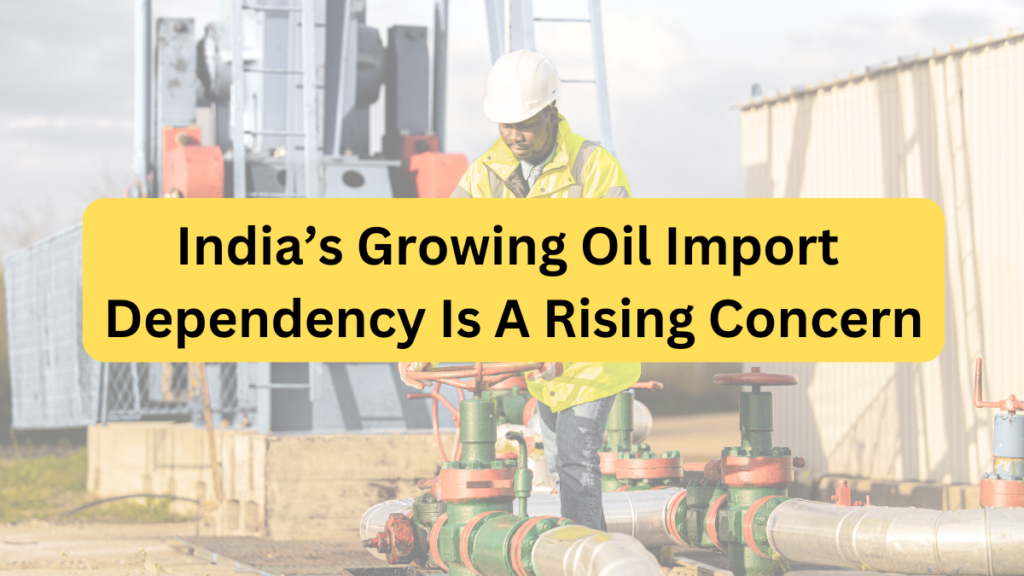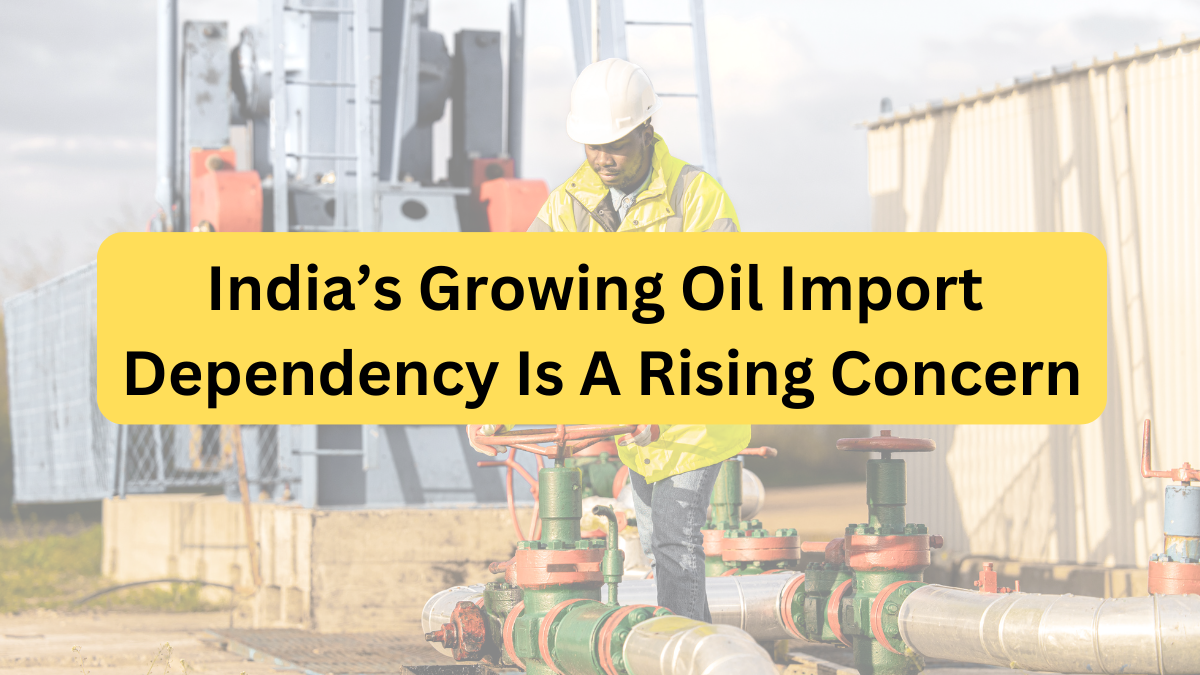India’s energy landscape is witnessing a significant shift as the country’s dependence on imported crude oil continues to grow. With stagnant domestic crude oil production and increasing demand for fuel, India’s import reliance has surpassed 88% in the first 11 months of the financial year 2024-25 (FY25). This trend suggests that the country’s dependency could hit an all-time high by the end of the fiscal year.

Key Highlights of India’s Oil Import Dependency
- Import dependency reached 88.2% in April-February FY25, up from 87.7% in the same period of FY24.
- India’s crude oil imports increased to 219.9 million tonnes (mt) in April-February, compared to 213.4 mt in FY24.
- Domestic oil production declined to 26.2 mt, from 26.9 mt in the previous year.
- Oil import bill for April-February stood at $124.7 billion, a 3% year-on-year increase.
- Projected petroleum consumption in FY26: Expected to rise 4.7% to 252.93 mt.
- India remains one of the world’s largest crude oil consumers and importers, despite being a net exporter of petroleum products.
Why is India’s Oil Import Dependency Increasing?
India’s growing energy needs are driven by several factors:
- Industrial Growth: Expansion in energy-intensive industries.
- Rising Vehicle Sales: Increasing demand for gasoline and diesel.
- Aviation Sector Growth: More flights and fuel consumption.
- Higher Petrochemical Use: Increasing demand for petroleum-based products.
- Population Growth: Rising energy consumption across households and businesses.
India’s reliance on imported oil has been on an upward trajectory, except for FY21 due to the COVID-19 pandemic. Below is a look at historical import dependency rates:
| Financial Year | Oil Import Dependency (%) |
|---|---|
| FY19 | 83.8% |
| FY20 | 85.0% |
| FY21 | 84.4% |
| FY22 | 85.5% |
| FY23 | 87.4% |
| FY24 | 87.8% |
| FY25 (Apr-Feb) | 88.2% |
Economic Impact of High Oil Imports
India’s heavy reliance on imported crude oil creates economic vulnerabilities:
- Higher Trade Deficit: A large portion of foreign exchange reserves is spent on oil imports.
- Rupee Depreciation: Increased import costs put pressure on the Indian currency.
- Inflation Risks: Higher crude oil prices drive inflation across multiple sectors.
- Economic Uncertainty: Fluctuating oil prices impact long-term economic planning.
Government Initiatives to Reduce Oil Import Dependency
The Indian government has taken several steps to address the rising import dependency:
- Policy Reforms: Introduction of the Oilfield (Regulatory and Development) Amendment Bill.
- Investment in Exploration: Encouraging private and foreign investments in domestic oil and gas exploration.
- Promotion of Alternative Fuels:
- Electric mobility
- Biofuels blending
- Hydrogen and other renewable energy sources
- Expanding Refining Capacity: India is one of the few nations still expanding its refining infrastructure.
Despite these measures, progress remains slow, and import reliance continues to rise.
The Future of India’s Oil Consumption
India’s oil demand is projected to continue its upward trend due to economic growth and energy needs. The country is seen as a major oil consumption center globally, with refinery expansions planned to meet future demand.
| Category | FY24 | FY25 (Apr-Feb) | FY26 (Projected) |
| Crude Oil Imports | 213.4 mt | 219.9 mt | – |
| Domestic Production | 26.9 mt | 26.2 mt | – |
| Petroleum Consumption | 218.3 mt | – | 252.93 mt |
| Import Bill | $124.7 billion | – | – |
Frequently Asked Questions (FAQs)
1. Why is India’s oil import dependency increasing? India’s oil import dependency is rising due to growing industrial activity, vehicle ownership, aviation expansion, and increased petrochemical consumption. Domestic production has remained stagnant, further increasing reliance on imports.
2. How does high oil import dependency affect the Indian economy? A high oil import dependency impacts India’s trade deficit, weakens the rupee, increases inflation, and exposes the economy to global oil price fluctuations.
3. What is the government doing to reduce oil imports? The government is implementing policy reforms, promoting electric vehicles and biofuels, and encouraging domestic oil and gas exploration to reduce import dependency.
4. Is India expanding its oil refining capacity? Yes, India is one of the few countries increasing its refinery capacity to meet future demand, positioning itself as a refining hub for petroleum products.
India’s energy future remains a balancing act between economic growth and energy security. While policy reforms and alternative energy adoption offer potential solutions, the country’s dependence on imported crude oil is unlikely to decline significantly in the short term.
Click here to learn more
Pari is a passionate writer known for captivating stories that blend imagination and reality. Inspired by travel, history, and everyday moments, Pari crafts narratives that resonate deeply with readers.
